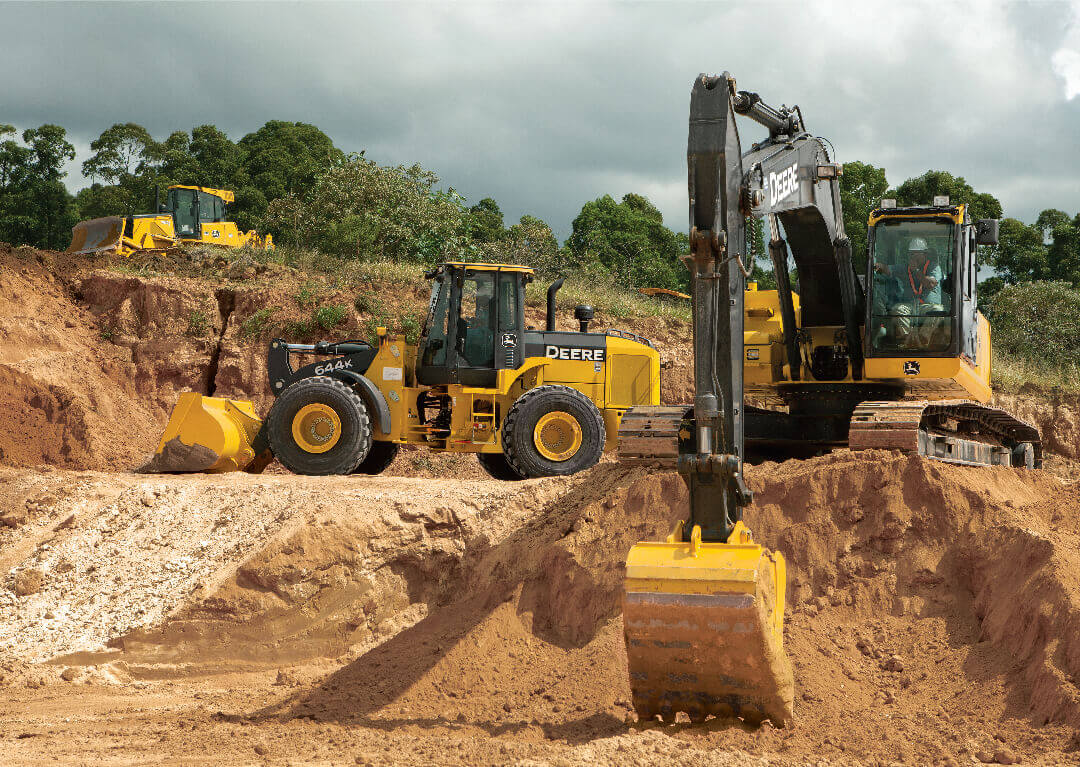Written By: Barb Stechman, 4Sight Solutions Specialist
1. Machine Location
Having the location of your equipment on demand brings countless benefits. From your laptop, desktop, or smartphone you can pull up the location of your equipment and share this pinpoint location with key individuals. This will eliminate the inefficiencies of your company searching for equipment. Location data can help you map the most effective route to a machine. Which you can reference with current traffic conditions to keep your fuelers, field technicians and workforce out of congested areas and moving in the most efficient manner possible.
Use your location information to prevent theft by setting up a geofence around the jobsite. If the machine crosses the boundary line you create, you can have JDLink notify you immediately by text or email. You can use this same geofence to tell you when a machine leaves one area and enters another. Want to know if your haul truck or scraper is in the cut or the fill? Want to know how many loads were moved? You can get all of this data by monitoring the location of a machine and pulling that data into a simple report. This will make your billing more efficient and allow you to show progress on a job, helping you to meet deadlines.
2. Run Time
Run time data is a simple measurement that tracks when the equipment is turned on and when it’s turned off. This allows you to set curfews for your machines. If somebody cranks up a machine that should not be running before or after work hours, you can have JDLink send you an alert via text or email.
One of the greatest benefits of having your run time data comes from compiling it and using it as a scorecard. If you know how many machine hours it took to complete a job, or move an amount of material, you’ll be able to bid more accurately for future jobs. That information can also be used to schedule maintenance and help your operations staff to keep your crew on schedule so you can meet your completion deadlines.
Use this data to get optimal utilization out of your fleet. On occasion, site supervisors may request more machines than they need. With your JDLink data, you will be able to accurately quote how many and what type of machines are needed to complete your project. Utilization records show you what machines are critical pieces of your fleet and running non-stop and conversely what machines are not being utilized to their full potential.
3. Fuel Burn
At the end of the day knowing how much fuel was burned and what machines need refueling can be a game-changer for your company. You can use your JDLink fuel burn data to streamline your fueling operations. Stop wasting your valuable resources sending fuelers to machines that don’t need fuel. Instead, start every day with a fleet that is ready to work!
Fuel burn stats can be used as an indicator of engine oil condition. You can use this to help you establish a more conditions based maintenance program. John Deere factory recommendations are to service your equipment every 500 hours. If you are running a machine in severe-duty conditions with high engine load you may want to sample or change oil sooner.
Fuel is almost always the biggest operating expense in earth moving. Several contractors use their JDLink fuel burn data to negotiate with fuel vendors on pricing. Keeping accurate fuel burn records will allow you to project costs more efficiently and bid more competitively. One contractor recently stated,
Get Started
At 4Rivers most machines come standard with JDLink. Give our 4Sight Solutions team a call and find out how we can put your JDLink data to work for you. Call us at 720.274.5407 to get started or take a look at other 4Sight Solutions here!
